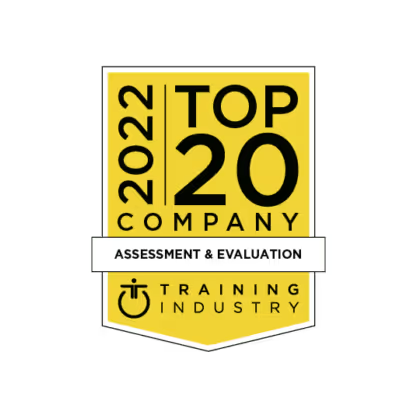Blog Posts


Why an inclusive culture is the key to accelerating your strategy
Organizational culture has the power to be an incredible strategy accelerant – but when your culture isn’t inclusive, your organization won’t reach its potential because everyone isn’t committed to doing their best work. So, how do you create an inclusive organizational culture that will ignite your strategy?
To start, leaders need to understand how culture influences the well-being of their people. They need to be willing to hold up a mirror and welcome the opportunity to see the gap between their organization’s current culture and the aspirational culture they wish they had.
What does it take to understand your organization’s culture in its full complexity? How can you invite the truth about your culture so that you can address what is really getting in your way?
When addressing cultural challenges, most organizations turn to surveys as a “check the box” activity to collect data and evaluate their current state. Leaders often assume that people will feel safe being open and honest in their responses. Anonymous surveys are a well-intended approach that prompt employees to share their genuine experiences. Unfortunately, the results do not always tell the whole story.
Why surveys are missing the mark
- Psychological safety is requisite for any evaluation. You will not get an accurate understanding of the state of your culture if employees believe that a survey isn’t confidential, or that there will be retribution for negatively-interpreted responses. Most employees are unlikely to report their true feelings if they fear there will be consequences for what they have shared.
- Surveys are subject to social desirability bias, which is the tendency for employees to overreport good behaviors and underreport less desirable ones. When employees face the potential for retribution or retaliation for unpopular responses, they are more likely to paint a positive picture of your organization that doesn’t get to the heart of what’s going on in your culture.
- “What have you done for us lately” is often the sentiment of survey participants – if employees believe that their feedback isn’t taken seriously by the organization, they won’t participate honestly.Here are a few questions to ask yourself:
- Have you communicated with participants since the last survey?
- Have issues raised been acknowledged, addressed, or resolved?
- What (if anything) has been done to mitigate reported problems?
- Did you formally thank employees for taking the time to contribute to improving the culture?
The bottom line is that employees need to see and believethat surveys are confidential and used to drive the change they care about, orthey will not bother reporting honestly and thoroughly.
Despite these drawbacks, many organizations will continue to utilize surveys to evaluate their culture. If this is the case for your organization, be sure to put guardrails in place so that privacy is protected and employees feel safe to provide insights. Share openly about how evaluations will be used, and who will have access to the results. Build the psychological safety necessary for employees to be honest, and your audit will be a success.Even with these guardrails in place, surveys are still an incomplete solution for better understanding your organizational culture. So, what else can you do to understand and transform your organizational culture?Don’t just evaluate your company culture: observe it.
How to observe your culture
- Gather unbiased perspectives from new employees.New employees aren’t drinking the Kool-Aid yet! They’ll come to the table without knowledge of the company’s history, cultural dynamics, and ways of working. They are great allies in the observation process, and may even share past experiences and ideas from other organizational cultures that will speed up necessary evolution.Ask new hires to spend their first month observing the culture. Do this without asking prompting questions (Do people work late? What is the feedback culture like?), or providing context. Give them license to explore without clouding their judgment with your own biases. This approach becomes a win-win – they add value immediately, and you reap the benefits.
Gather feedback from people across functions, experience levels, and backgrounds. You want to be sure to get the most complete picture of the organization, so diversity of observers is key. The insights should reveal the day-to-day pain points and opportunities for cultural adjustments. - Check your values.Company values also influence organizational culture. These values are typically established and (sometimes) modeled by senior leaders, which can be limiting. Authorship is ownership, so your values should reflect the culture you want and need to create, and guide your organization into a promising future.When entire swaths of the company are excluded from charting the organization’s guiding principles, it should come as no surprise that some values don’t resonate. Values make a difference when they are well defined, inclusive, and exemplified by how people engage with one another.
- Review your policies. Perhaps you’re seeking to have a more customer-centric organizational culture, and all customer-facing decisions must have a sign-off from a leader at the partner level. With this policy in place, junior employees cannot act without a partner’s consent.Those engaging most frequently with the customer are unable to innovate or experiment with solutions that might provide the best service. As you observe your culture, ensure your policies aren’t holding your organization back from achieving its strategic goals.
Taking an objective perspective can be challenging, so it can be helpful to call on someone outside the company to aid in your observation. They may be able to spot issues that you have been unintentionally (or intentionally) avoiding that need to be addressed.
Throughout the process of understanding your culture, be sure you are conscious about inclusion. This will mold your new culture to truly reflect both the organization and the mindsets, behaviors, and ways of working employees need to move forward together.
After gaining a clear understanding of your organizational culture, make sure there is a plan to address any issues that were uncovered, especially if the culture has some toxic elements. While the CEO, Chairman of the Board, and Board of Directors need to take responsibility for initiating the change, all employees should be held responsible for repairing the culture.
Creating this culture of inclusion means gaining more buy-in from all employees – from the most senior levels to the frontlines, across regions and functions – which is the powerful strategy accelerant you’ve been seeking. You are sending a message to everyone in the organization that you need them and that they are vital to the organization’s success.
A culture of inclusion fortifies your organization with the collective commitment needed to navigate future shifts with greater ease and success. Imagine working for an organization where everyone invests in creating and sustaining a great culture – who wouldn’t want to be a part of workplace like that.

4 ways to help your salesforce excel
The great Wealth Transfer and several other shifts in the ultra-high and high net-worth client bases are just beginning to emerge. Amid these massive changes, many financial services firms are wondering what’s next for their organization and industry. The reality is that organizations must transform and perform or prepare to be left behind.So how can financial services organizations shift to this new way of working? It starts with your customer-facing employees. Your relationship managers are the critical force that will enable your organization to adjust to rapidly changing customer needs, provide next-level service, and spark digital transformation.So how do you transform your salesforce? Successfully navigating these uncharted waters requires four critical elements:
1. Strategic intent and alignment
It is critical to define your transformation as part of the strategy or align it to the strategy. This ensures that there is a clear line of sight around what each customer-facing employee is doing and how it contributes towards the business’ overall goals.To do so, inspire your people by defining the following:
- Alignment – understanding of the desired future state of the organization, why things must change, and how it will happen.
- Mindset – the belief that the shift is necessary, worthwhile, and beneficial for employees and the organization.
- Capabilities – the skills employees need to change the way they are working and move into the new way of working.
Alignment, mindset, and capabilities are essential for helping employees buy in to the transformation, internalize the shift, and bring it to life.
2. Business sponsored transformation
Every transformation should be sponsored by a business unit lead or a business unit executive. This ensures that the transformation is taken seriously by all stakeholders and can be kept top of mind as the business moves forward.Here’s how you can gain the critical buy-in necessary from the following groups:
- Executive team – responsible for delivering results within the organization. To gain buy-in, consider partnering with an executive sponsor to walk the executive team through the transformation.
- Human capital team – traditionally sponsors elements of the transformation. They focus on the quality of the journey, alignment to existing processes, and alignment to job profiles. To get buy-in from this group, consider including them as part of the scoping process or on the steering committee.
- Leadership team – the one group that must buy in to the transformation. These leaders need to feel that they are contributing to shaping the transformation and feel supported in navigating this journey. To do this, focus on two key elements: inclusion and support. Engage this group from the beginning of the journey and consider consulting them to determine the key performance indicators.
- Your people – the intended audience of the transformation and the largest internal group. If there is no-buy in at this level the transformation will fail. The key question to be answered for this group is simply “What is in it for me?” Leverage communication to gain buy-in from this group. Try drafting a structured internal communication plan that includes key-executives and sponsors as communicators.
Gaining buy-in is a fundamental part of your journey. Maintaining buy-in throughout the transformation is one of the toughest challenges that an organisation will face. Constant check-ins with each stakeholder group will ensure that you not only gain traction, but maintain it as the audience progresses through the journey.
3. Results measurement
To create impact, it is critical to align on which results should be measured as part of the transformation. The audience that will undergo the transformation must have an influence on these results, which creates a sense of ownership.Start by defining the metrics that matter most to executing your strategy. For example:
- Workshop elements (NPS, Facilitator score etc.)
- Impact on confidence
- Behaviour shift
- Business results
- Global awards
As you are designing your program, keep these in mind as they will help you measure and deliver ROI. Regardless of which metrics you choose, kick off the program with an assessment. This will provide you and the employees with a baseline understanding of their current state and enable you to compare their behavior at the start of the journey to the end.Throughout the program, build in opportunities for participants to track progress. One way to do this is by leveraging your CRM to set and measure progress on goals. This will not only provide your organization with deep data and insights on individual and organizational progress, but will also reinforce CRM use.After your program, conduct another assessment so that you can compare participants’ baseline against their current state to evaluate their progress.
4. Leader alignment
Transforming a salesforce requires that sales leaders and managers play a role in coaching and aligning the audience. This level of support creates an environment for the audience to excel as they navigate the transformation.Support from leadership is critical for the execution and application of new skills, behaviours, tools and processes. To ensure your customer-facing employees have the support needed to execute the transformation, set up opportunities for leaders to gain coaching skills.For example, integrate coaching into the program by setting coaching guidelines for each module of the learning journey. This will ensure that leaders are equipped to help their people embed the new tools and processes.
The world of relationship management in financial services is primed for disruption. Transform your sales organization before it’s too late by starting with your most critical driving force – your customer-facing employees. With strategic intent and alignment, sponsorship from the larger business, results measurement, and support from leaders, you’ll spark lasting change that will enable your organization to get and stay ahead.

BTS Recognized as a Leader in Assessments in 2022
STOCKHOLM, SWEDEN and SAN FRANCISCO, CA – BTS Group AB, a leading global strategy implementation firm, was recently named a Top 20 Assessment and Evaluation Company by Training Industry.
With decades of experience in the industrial/organizational psychology space, BTS’s assessment team continues to leverage customized business simulations to create the best experiences possible, with offerings spanning individual and group assessments, executive coaching, action planning, enhanced 360-degree feedback, and more.
BTS assessments are digitally-enabled, highly contextual experiences grounded in scientific research, providing psychological and psychometric rigor in delivery, process, and evaluation. Assessments can be administered onsite or remotely, ensuring effective measurement from anywhere in the world.
Innovations in BTS assessments this year include gamified business and leadership simulations with capability scoring; an AI-enabled, patent-pending methodology for measuring mindsets; and a culture diagnostic.
Selection to the 2022 Training Industry Top Assessment and Evaluation Companies List was based on the following criteria:
- Breadth and quality of assessment capabilities and evaluation techniques.
- Industry visibility, innovation, and impact in assessment and evaluation market.
- Client and user representation.
- Business performance and growth.
“The companies on this year’s Top 20 Assessment and Evaluation Companies List deliver high-quality tools and techniques to not only evaluate and improve employee performance, but also create actionable insights for the business and employees,” said Jessica Schue, market research analyst at Training Industry, Inc. “Covering a wide range of assessment types, such as employee development, performance, knowledge retention, leadership potential and more through extensive research and proven insights, these organizations lead the assessment and evaluation market.”
“It’s an honor to be named one of Training Industry’s Top 20 Assessment and Evaluation Companies again,” said David Bernal, Global Head of BTS Assessments. “We’re grateful for the recognition and excited to continue creating powerful, impactful experiences that produce positive outcomes for our clients, whether it’s focused on hiring, succession and development, or improving diversity, equity, and inclusion.”

How to become the leader people want to work for in challenging times
This article was originally published in Fast Company.When we began the year, top of mind for managers was keeping their best people and handling the burnt-out quiet quitters. Today, as inflation rages and hiring plans are shelved, it is tempting to believe that the talent crisis has passed. Maybe managers don’t have to worry so much about the disconnect and isolation. Perhaps employees will be more inclined to stay put in uncertain times.
Though the Great Resignation is probably over, it would be a mistake to think the challenge has passed. You need all hands on deck to focus on priorities during a recession. That means you must reignite the fire for quiet quitters. It’s important to stay focused on people during a recession because there is still a potential to become stretched and depleted. How can you re-inspire hearts and minds and still give people a sense of balance and flexibility?Since the pandemic, many good changes have come to the workplace, not the least of them greater attention to the people side of business. The secret during a downturn is to remember that driving an agenda doesn’t mean losing that connection with your people.Most of us think of ourselves as people leaders, but what we intend and how others see us is often different. What we’ve learned about leaders in challenging times has been assessed through data analysis. We know leaders who help others feel purposeful and resilient have qualities that are hard to come by and, therefore, highly valued.
Stay calm, carry on
We have been assessing leaders around the globe for 10 years, and we know that when leaders are calm in a crisis, people are more likely to share their concerns and get issues resolved. The qualities of composure and restraint are essential to building trust. Composure is the ability to manage through a difficult period with calm and resolve. Restraint is managing your emotions and creating a safe space for conversation. These are two critical aspects of constructing a psychologically safe environment where people love working and are free to speak up and be themselves.People rally around leaders who approach situations calmly and objectively. Their teams know it’s okay to speak up, admit mistakes, and raise issues. If you struggle to remain calm, it can be helpful to delay a response, walk away, and give yourself time to think. If you set the intention to create a calmer place where people can thrive, employees will notice the change. During volatile times, remember to control your emotions.
Share more about yourself
Many of us are inclined to focus on others at the expense of sharing our authentic selves, but connection is a two-way conversation. When people don’t know us, they don’t trust us. This is what is meant by authenticity. In challenging times, such as a recession, you might be tempted to hold back and not share your concerns. The impact might be that people don’t feel they can trust you because they aren’t hearing the truth.
Leaders can demonstrate authenticity by sharing what is happening at the right time while also reassuring others that there is a plan. When you can be real with people, you are more likely to hear thanks. They want to be treated as peers in the workplace.Storytelling can also be helpful during difficult times. Stories connect you with others and help them see you as human. People crave that kind of connection and appreciate learning from others. Showing authenticity in the workplace can increase engagement by 140%.Balance humility and confidenceGreat leaders balance confidence and humility, flexing both in challenging times. Humility is understanding you don’t have all the answers. People typically notice when a leader expresses genuine curiosity about their experiences and points of view. Asking questions and listening closely enables you to learn more, act more quickly, and address issues promptly.
Confidence is the ability to guide a team to make better decisions, especially when the choices during difficult times are less than ideal. It isn’t hubris or superior knowledge but rather a thoughtful, step-by-step approach to clarifying priorities, considering the data, and taking action.Difficult times can incapacitate teams when they aren’t sure what to do. The plan forward must be altered, and too much is unknown. Great leaders help their teams consider the options and scenarios and remain flexible as conditions change.Be receptive to feedbackTo develop these qualities and evolve your leadership style, ask for feedback from people who see you in action every day to understand your shortcomings. We all have good intentions, but often our intentions don’t translate to inform how others see us. After meetings, try asking, “How am I doing?”
Hearing people out is the next step: Consider what the feedback they’ve shared might be true, however painful. After you consider the feedback, simple shifts can make a big difference in how people experience you.As we round the corner to 2023, remember you’ve learned a lot in leading through challenging times. Although a downturn might test that learning, draw on the lessons and stay open to feedback. We can only control how we respond as leaders, and when we respond in ways we want to be led, we help create people-centric companies.

Execute great: How to move from leadership program to great on-the-job performance
When leaders achieve “great," they do the best work of their careers. They are also better equipped to role model and expect “great” from others – both of which increase value for their company and their colleagues.

Experience great: From guru-centric development to practicing great leadership at your company
Enterprise Simulation Methodology
A leading technology company found themselves at a critical juncture. They had made it to $2B in revenue through a very successful innovation with coupled services, and realized that they had years of growth ahead by running “business as usual.” However, at some point, perhaps five-to-seven years into the future, if they didn’t diversify and provide their customers with a broader suite of technology and services, they would reach market saturation and growth would stall.A new CEO was appointed, acquisitions were made, and the company crafted a broader vision. Products now had to evolve from point solutions to suites of offerings, go-to-market strategies had to evolve, and sales conversations with customers needed to change.During the path to $2B, the senior leaders and members of the executive team operated very successfully in siloed businesses and functions, pushing decision-making low into the organization. Clear metrics for success and healthy competition between silos propelled the company forward. Moving forward, in order to broaden customers’ understanding of the company (from a technology partner to a trusted advisor) and grow from $2B to $6B, a lot needed to change.For the CEO and Head of Talent, the immediate challenge became, “What is the most efficient way to equip the executive team and the top 500 leaders to pivot the company and lead the next phase of growth?” They considered all-company memos, global roadshows with the executive team, offsite working sessions with the C-suite, new metrics and accountability. Ultimately, they did all, but even still, they needed to ignite understanding and passion among senior leaders to bring the energy critical to lead the change, resist the temptation of fear, and build the cross-company relationships key to success.Creating a two-day simulation experience, the C-suite engaged all 500 leaders, enabled them to assume the role of the CEO, and allowed them to practice running the entire company for three years into the future. Inundated with customer, technology, and competitive trends, the leaders felt shareholder value creation pressures as well as employee engagement and culture realities. As the teams wrestled with the tensions and tradeoffs in evolving the company and running the core and new businesses at the same time, the leaders matured—they matured in their understanding of why the company had to change and what it meant for them.And by strengthening their command of both business models, they were better positioned to lead teams with authenticity, passion and empathy, while finding the right speed and timing of their team’s evolution to best support the company’s goals.
The Impact?
Six months later, the question on the all-company employee survey, “I understand and believe in the company’s vision and my role in making it happen,” moved from the lowest scoring metric to one of the highest. At the time, the COO said, “When I was told a simulation would be the key alignment vehicle for our top 500 leaders I was skeptical. The custom business simulation accurately modeled our business challenges and anticipated our future evolution. The experience allowed our top 500 leaders to not just see the new strategy, but to practice making our strategy and vision a reality. The experience got leaders from different organizations with disparate points of view to work together and understand the real trade-offs and friction points, and provided the ‘big picture’ view we needed.” The company later achieved its growth target with the mix of “old” and “new” revenue it was looking to balance.
Sources
[1] Schultz, Howard, Onward: How Starbucks Fought For Its Life Without Losing Its Soul, New York: Rodale Books, 2011.[2] Pierre Gurdjian, Thomas Halbeisen, and Kevin Lane, “Why Leadership-Development Programs Fail”, McKinsey & Company, January 2014.[3] Gladwell, Malcolm, Outliers: The Story of Success, New York: Little Brown and Company Hachette Book Group, 2008.[4] Kedges, Kristi, “If You Think Leadership Development is a Waste of Time, You May Be Right”, Forbes, 23 September 2014.

Defining great: What does great leadership look like in your company?
Define "great": Case in point
Generic leadership competency models vs. defining great leadership at your company
The president of an Asian business unit at a leading Oil and Gas company defined what leadership capabilities would be required for their top 100 leaders to meet the business objectives laid out by their five-to-ten year strategy.The company has operated in the country for more than a century, but the leases for many of the large producing fields were expiring in the next decade. Meanwhile, the national oil company was eager to assume the leases and take over production. However, operating in the country had distinct challenges: the government has no tolerance for harmful incidents, and demanded that 80% of employees and management be native to the country.It’s tempting to see these challenges requiring effective “communication” and “stakeholder management” skills. But this competency-based approach hardly gets close to the complexity and nuances of what was actually demanded from these Oil and Gas leaders in this market. The successful renewal of the leases requires:
- Anticipating and responding to changes in power in the local or federal government
- Building relationships with government officials, parliament members, and local and existing community leaders in power, both today and in the future
- Adapting to changes in regulations and policies
Yes, there are core skills required, like communicating your value proposition to stakeholders and engaging with stakeholders to find win-win solutions. However, these would never sufficiently position the company’s leaders for success. The leadership capabilities needed for success are significantly more complicated and contextual to the challenge and the market. To learn more, read the full piece: Leadership competency models.

Marketing made personal
Today’s customers are more demanding and better informed – the marketing and selling environment is more challenging, and the buying processes is more complex. As a result, there is a pressing need to make marketing more impactful.
To address these challenges, companies must have a well-designed marketing and sales methodology that reduces complexity for buyers and increases the agility of the marketing and sales process.Marketing of the future must be more personal and center on the customer, whether while creating insights, defining value propositions, capturing value (pricing), branding, communicating, or managing channels. The customer is the key.Marketing must also be more impactful, results-oriented, and data-driven. To do so, marketing cycles must be synchronized with sales and buying cycles. Lead management must be more integrated and data-driven, aligning marketing, sales, customer service or success.In addressing all of these marketing challenges, consider a partner with deep expertise in not only marketing but also sales transformation. Partners who help you to define how you will approach marketing in the future, assess your organization against it, and chart a path that integrates your sales and marketing teams will set your organization up for long-term success. Focus on creating alignment, shifting mindsets, and developing your team’s capabilities in an impactful, measurable, and engaging way.
References
Tech CEO Research Team. (2020, June 1). Ignition Guide to Conducting Customer Segmentation as a Tech CEO. Gartner. https://www.gartner.com/document/3985861?ref=solrAll&refval=338014589White, S. & Finkeldey, D. (2020, January 8). A Practical Guide to Market Segmentation. Gartner. https://www.gartner.com/document/code/464988?ref=authbody&refval=3985861

How to lead high value meetings with senior executives
In advance of an important meeting with company executives, most leaders provide an agenda along with a set of pre-read materials.
The ask of the senior leader audience: Please review these documents before our meeting.
It seems like a simple request, except for the fact that for many of us, getting an audience to even skim our pre-read materials in advance of a meeting is a minor victory. Pre-reads are tricky. Just ask anyone who has started a meeting by asking the audience if they reviewed the slides, charts, or documents that were painstakingly crafted and shared in advance. Cue the awkward silence, as audience members explain how they were too busy, they just didn’t have time to get to it, so could you please walk through the pre-read materials now, blah, blah, blah. On the other hand, you may have one or two colleagues that seem to enjoy poring over your pre-reads, ready with their tough questions when the meeting time comes. Let’s appreciate the thoroughness of these individuals, rather than wish they were more like everyone else who just ignored the pre-reads in the first place.
Done right, pre-reads play a valuable role for leaders and teams to lead productive meetings. They provide important background and context, enabling meeting leaders to make well-informed decisions and engage in productive, strategic discussions far more efficiently.
How do we consistently create these types of meeting outcomes? Here are some simple principles to consider:
Always link the pre-read to the meeting purpose and desired outcomes. A CFO and his team had scheduled an important meeting with the CEO and executive leadership to determine future capital expenditures at the company. In advance, the team prepared a detailed set of materials for the senior leaders to review, including a 60-page document that contained important information that would be relevant to the discussion. Knowing that the meeting would not succeed unless the executives had thoroughly reviewed the document in advance, the team prepared a short note to accompany the pre-read that reminded the audience of the purpose of the upcoming meeting, the relevance of that purpose to the audience, and the role the pre-read materials would play in achieving that purpose. The simple note paid off when company executives told the finance team it was one of the best meetings any team had ever led at the company.
As the CFO shared: “The note made such a difference. Too often, we assume the purpose of the pre-read is obvious, but we must make the connection clear to the audience. It isn’t enough to send slides in advance. If you really want people to read them and absorb the information, provide a compelling reason. We learned that by saying, ‘If you read these, we’ll achieve something important together,’ made all the difference.”
Make it very easy for your audiences to be prepared. Let’s imagine that you were part of the audience described by the CFO in the above example. No matter how compelling the note and materials provided in advance of the meeting, there’s no getting around the fact that you’ve been asked to read and absorb a 60-page document. For your average senior leader, it’s challenging to find the time to prepare for meetings and one of the biggest reasons that pre-read materials don’t get the attention they deserve.
Here’s where you can help your audiences. Provide questions and answers. This easy step can be a game-changer when done right. One simple technique is to raise a few relevant questions in a short email to your audience in advance of your meeting that includes your pre-read. For example:
- What is the overall purpose of the project?
- What do we want to accomplish in our meeting?
- What role will the pre-reads play in accomplishing that objective?
- How are the pre-reads structured to enable our discussion?
- What role will you play?
Don’t forget to provide simple, bullet-point responses to your questions as part of your note. The question-and-answer format is a powerful combination that helps you set the stage for your meeting by guiding participants in advance. You’re not just sending an agenda with an attachment: You’re taking charge and helping your audience understand how to show up prepared and ready to engage in a very productive discussion with you.
Good pre-reads take time to create, and even outstanding materials may get overlooked because the value they provide may not be immediately obvious to your audiences. The moral of the story? Don’t let your efforts go to waste. Good information provided in advance of meetings leads to better discussions and smarter decisions, but those outcomes won’t just happen on their own. With a few small tweaks to your pre-meeting process, you can achieve far better post-meeting results.

3 ways to help your future women leaders thrive
Much has been written about how to help women succeed in the workplace.
Talent leaders put time and effort into cracking the code on unlocking the paths for women to grow and develop, so that they can retain and benefit from this critical segment of the workforce. Yet despite considerable progress over the years, gender inequality continues to permeate companies worldwide. On average, less than one third of senior and middle management positions are held by women today.[1]
To uncover more about why this is the case and understand how to break the cycle, BTS supported a study on millennial women’s career progression.[2] The research specifically examined Emirati women’s career progression, but the lessons drawn from the findings provide a useful path forward for talent leaders everywhere.
The findings from the research underscore how many women still feel that gender restricts their career growth and ability to pursue their dream jobs. The concept of the “glass cliff,” where women and minority leaders are frequently appointed to positions of power during times of crisis when they are likely to fail, is an example of how gender continues to shape workplace biases, attitudes, and dynamics.[3]
In the face of a recession, the “glass cliff” is especially relevant, and the concern for women’s career advancement matters now more than ever. In past economic downturns, women have been disproportionately affected by lay-offs and narrowing opportunities due to prejudiced societal expectations about life at home and outdated workplace norms.
When organizations fail to invest in the development of women, they are leaving half of their potential talent behind. This puts organizations’ ability to grow, develop a sustainable bench of leaders, and ensure their future at risk. Improving the gender gap has the ability to not only improve outcomes for women and their careers, but also enhance business outcomes for organizations by enabling them to get more out of their talent.
The research, conducted through in-depth, semi-structured interviews with a data sample of 15 professional Millennial women from a range of industries, provided several clear themes that talent leaders and their companies can prioritize to most effectively address this challenge.
To aid in the career progression of future female leaders, organizations need to invest in the following three things: 1) access to professional development, 2) availability of career support, and 3) stretch goals that encourage learning.
- Access to professional development.It’s no secret that investing in professional development is good for organizations – it’s been proven to strengthen retention, improve employee engagement, and attract top talent.[4] This is especially true for early career women.Entering the workforce for the first time, young women often struggle with self-image and confidence.[5] Improving access to professional development can accelerate skill-building and confidence for this critical group. All of the women in the study reported that gaining access to learning opportunities was a requirement for their career progression.To support emerging women leaders, Talent leaders should create opportunities for development, specifically by providing financial support and dedicated time for women to learn.
- Availability of career support.Career support can take on many forms, but all fifteen women surveyed acknowledged that ready access to both formal career mentoring and flexible working practices was essential for helping them achieve both their short- and long-term career aspirations.Mentorship is beneficial to all employees. According to Forbes, 25 percent of employees with a mentor were able to achieve a salary grade increase when compared to only 5 percent of employees without one. For women in particular, mentorship can “develop leadership skills, increase self-confidence, improve emotional intelligence, and navigate gender-specific obstacles.”[6] To build these critical networks within your organization, talent leaders should consider creating formal mentorship opportunities where senior leaders can volunteer to mentor young female professionals.In addition to formal mentorship, sponsorship and allyship are also critical elements talent leaders can cultivate to support women. Sponsors and allies may not have a formal relationship with the women they support, but act as advocates in senior meetings when the woman or women they sponsor may not be in the room, accelerating their ability to access stretch opportunities.Furthermore, creating programs that support flexible working practices can be critical for retaining high-potential women. Especially following the pandemic, which regressed several facets of global gender equality, a continued emphasis on supporting women to have a career outside the home is critical.[7]Even today, women do twice as much domestic and household work as their male partners.[8] In the pandemic, women also experienced higher rates of layoffs, voluntary attrition, and declining pay and have yet to fully recover.[9] Moving forward, rather than seeking a return to pre-pandemic office norms, organizations need to consider how to support women in “the new normal.”Programs such as organization-sponsored parental leave, onsite childcare, or flexible work-from-home policies are critical and can be what prevents a woman from leaving her job under pressure to be successful both at work and at home.
- Stretch goals that encourage learning.When provided with the right support, “stretch goals can… encourage enthusiasm, motivation, productivity, and innovation.”[10] The women who participated in the study described that stretch projects and goals were critical for their advancement.Given access to professional development, mentorship, and the flexibility to work in the way that works best for them, women also need opportunities to demonstrate their capabilities and how they add value to the team. Talent leaders can drive this by developing managers to become allies and seek out opportunities for women to shine.By helping managers become active career allies and advocates to the women on their teams, talent leaders will create a movement within the organization in support of women. Consistent opportunities to work on stretch goals will generate a positive feedback loop where high-performing women not only succeed and advance in the organization but stay to develop the next generation of women leaders.
Empowering women to reach their full potential has both commercial and ethical benefits. By investing in professional development, career support, and creating a culture of stretch goals to encourage learning, your organization will retain more women and accelerate their growth, improving both the bottom line and global social progress.
Sources
[1] Occupations with the smallest share of women workers. (2019) U.S. Department of Labor, Women’s Bureau.; Campuzano, M. V. (2019). Force and inertia: A systematic review of women’s leadership in male-dominated organizational cultures in the United States,” Human Resource Development Review, 18(4).
[2] Cherniawski, T. (2020). The Disrupted Generation: Exploring millennial Emirati women’s career progression in the context of changing UAE dynamics (dissertation).
[3] Oakes, K. (2022, February 6). The invisible danger of the ‘glass cliff’. BBC Future. Retrieved November 3, 2022, from https://www.bbc.com/future/article/20220204-the-danger-of-the-glass-cliff-for-women-and-people-of-colour
[4] Heinz, K. (n.d.). 6 reasons why employee development is key. Built In. Retrieved September 20, 2022, from https://builtin.com/company-culture/employee-development
[5] Why leadership training is critical to helping women achieve their potential. (2020) Hira Ali. Forbes.
[6] Kramer, A. (2021, December 10). Women need mentors now more than ever. Forbes. Retrieved September 20, 2022, from https://www.forbes.com/sites/andiekramer/2021/07/14/women-need-mentors-now-more-than-ever/?sh=1f8c61ec2bbd
[7] Azcona, G., Bhatt, A., Encarnacion, J., Plazaola-Castaño, J., Seck, P., Staab, S., & Turquet, L. (2020). From Insights to Action: Gender Equality in the wake of COVID-19. UN Women – Headquarters. Retrieved November 3, 2022, from https://www.unwomen.org/en/digital-library/publications/2020/09/gender-equality-in-the-wake-of-covid-19
[8] Gender equity starts in the home. Harvard Business Review. (2021, February 1). Retrieved September 20, 2022, from https://hbr.org/2020/05/gender-equity-starts-in-the-home
[9] Azcona, G., Bhatt, A., Encarnacion, J., Plazaola-Castaño, J., Seck, P., Staab, S., & Turquet, L. (2020). From Insights to Action: Gender Equality in the wake of COVID-19. UN Women – Headquarters. Retrieved November 3, 2022, from https://www.unwomen.org/en/digital-library/publications/2020/09/gender-equality-in-the-wake-of-covid-19
[10] Stretch goals: Definition, benefits, tips and examples. Indeed. (2022, June 8). Retrieved September 20, 2022, from https://www.indeed.com/career-advice/career-development/stretch-goals

The 3 things you’re not doing in performance reviews
“I am dreading next week’s performance review conversations,” a senior leader recently shared. He was so stressed that he was thinking of postponing the conversations or making the performance conversations quick just to get them over with.
Sound familiar? Of course it does.
When thinking about giving performance reviews, people leaders often fall into a “mind trap” of avoidance or fear. They may doubt their own ability to have the conversation, or don’t want to upset anyone. As a result, leaders end up wasting an opportunity to encourage growth and development in their team members. Direct reports leave these conversations without any useful information or guidance. They’re told something like, “You just need to be more strategic,” and are sent back to work until their next scheduled review. Performance conversations become a thoughtless exercise with no meaningful impact or results.
So, what goes wrong in these conversations?
BTS recently engaged with more than 3,000 people leaders across APAC, IMEA, NA, and LATAM who were interested in prioritizing development conversations with their teams. In addition to sharing knowledge of what was working in performance conversations, we discussed the challenges they were experiencing. The insights and practices discussed can be used to help all people leaders have better performance conversations.
There are a few ways leaders can prioritize development:
- Check in on a direct report’s goal progress and further define what success looks like
- Help a direct report grow in their role because…
- They are highly engaged and ready for more
- They have been disengaged in their role
While all conversations are important to help people grow and develop, the focus and fear levels attached to a performance review changes based on an employee’s engagement level.
To help make development conversations impactful for the employee and the organization, focus on three areas:
- Set the Agenda. Share the intention of the conversation. This simple act creates clarity for both parties around what is going to be discussed and the expected outcomes. It does, however, require preparation. Setting the agenda also provides an anchor and structure to return to if the conversation goes off course. The agenda could be reviewing what happened together, celebrating successes, or looking at learning and development opportunities.
- Instead of, “You need to be more strategic,” which is vague and doesn’t explain the “so what,”
- Try, "I’d like to talk to you about how you can be even more successful in your role. How does that sound?” This sets the intention, “I want to help you be more successful.” You can then share how strategic thinking can support their growth.
- Explore facts and impacts. As a manager, you probably have a lot of thoughts about what’s needed for your team members to develop, but it’s important to get their perspective. Listening to others’ perspectives allows leaders to widen their knowledge. Share the “facts and impacts” of what you are noticing, especially the specific behavior of your direct report—and get their side of the story—before focusing on solutions or driving outcomes. Avoid broad generalizations and stick to specifics.
- Instead of, “Others always have to chase you to get what they need,” which is a big generalization,
- Focus on the facts: “I have noticed in the last two weeks three people had to follow up with you in order to complete our deliverable.”
- Then, state the impacts: “The impact for you is that others can’t trust you, and the impact on the team is extra work and stress, and the impact on the business is a drag in productivity, which risks our revenue.”
- Use the Coach Approach. Using coaching skills—being present with the other person, listening deeply, and asking powerful questions—is the surest way to empower others to find the best solutions and maximize their potential. Leaders who effectively prioritize development understand the importance of the role they play in growing their people. They know that showing curiosity, listening, and setting accountability are their biggest assets in performance conversations.
- Instead of, “What works for me is…” and spending the majority of time talking about your perspective and expertise,
- Try, “When you think about your career goals, what does success look like?” This focuses on curiosity and empowering them to co-create the plan.
Performance review conversations don’t have to be a dreaded chore. By setting an agenda, exploring facts and impact, and using coaching skills, you can make them the inspiring and motivational tool they’re meant to be. You might even find yourself looking forward to them.

BTS named to Selling Power Magazine’s Top Virtual Sales Training Companies 2022 List
STOCKHOLM, SWEDEN and SAN FRANCISCO, CA —BTS GROUP AB (publ), a world-leading strategy implementation firm, was recently named on Selling Power’s Top Virtual Sales Training Companies in 2022 list.
“Receiving recognition for our virtual sales training capabilities two years in a row is energizing,”
said Rene Groeneveld, Global Head of BTS’s Sales and Marketing Center of Expertise.
“Amid the pandemic, we pivoted to deliver best-in-class solutions to our clients in a fully virtual environment. Since then, we have continued to offer hybrid-virtual virtual solutions. We are very grateful for the ongoing partnership and trust from our clients to co-create leading edge solutions.”
Companies who received recognition were evaluated on their offerings for training and retention, delivery methods, and their innovation and response to changing market conditions.
The main criteria for evaluation included:
- Strategies to keep participants engaged
- The scope and breadth of virtual sales training approach
- Methodologies for supporting participant retention
- Innovation in response to customer needs and marketplace changes
- Client satisfaction and general client feedback
To evaluate client satisfaction, the Selling Power team surveyed and considered feedback from more than 270 clients of the applicants.
Here is a brief selection of comments from their clients:
- “Simply put, they provide superior training and development for our team. From our entry level folks to our most experienced team members, everyone gained knowledge from their sessions.”
- “Fabulous training. Engaging, passionate, and always willing to go the extra mile. Their investment in our team has been amazing.”
- “First Class organization that stands behind their training services.”
- “Great overall experience and concepts outlined to address the key sales success areas we are targeting. Their team has maintained a high level of service, and we appreciate the partnership.”
- “Great company, great people, great results!”
Selling Power advises CROs, sales VPs, and sales enablement leaders to leverage the list to find the right sales training partner to deliver best-in-class virtual sales training.

Your leaders' action bias may be slowing down your strategy
Today’s brightest leaders feel compelled to continue to move fast and innovate, improve, and expand, against a shifting backdrop of huge uncertainty and disruption.
Delivering both defensive and offensive plays adds to the pile of “to dos” to keep up with the marketplace and satisfy their boards. This mindset has turned strategy into a daunting exercise that adds to, rather than becomes part of, executing on critical initiatives. It’s no wonder capable teams — inundated with requests, projects, and ideas — often miss the mark on execution.When leaders race to lead their teams to deploy strategic initiatives without ensuring the connective tissue that strategy execution requires, activity increases with fewer checks and balances that align with the business’s most critical goals. While lots of work seems to be getting done, increasingly, it’s the wrong work to deliver on the strategy. Momentum stalls, and the challenges continue to mount.Even the smartest leaders are left wondering, “Why isn’t there a better way?”Future-proofing your business, when the “new normal” is full of change and challenge, requires leaders to focus on three critical pillars of strategy execution:
- Alignment: a common understanding of priorities, roles, and responsibilities
- Mindset: beliefs and attitudes of the individuals that impact the ability of the team and organization to execute
- Capability: the leadership skills required to implement and deploy strategy
Building stronger alignment and developing the right capabilities remain critical and are regularly discussed in the context of strategy execution. We have found that mindset is seldom given the airtime it deserves and is the crucial third element in successful strategy execution. Shared mindsets are critical at the C-suite, undoubtedly, but strategy execution truly stagnates when employees are unable to shift their individual mindsets to make the desired change a reality. The current uncertainty and volatility only exacerbate this. If there’s ever been a time that requires people to make timely decisions — both big and small — that drive execution, that time is now.
As you think about gearing up your organization to execute on your strategy in the uncertain year ahead, consider this. One thing that is not going to change is having to move fast and do a lot. Your role as a leader is to check your action bias through the focus of strategy execution done right. The key is to have both the alignment (so that we all know what to do) and the mindset (so we share a collective understanding of what the organization needs and how we can support that individually). As an example, as a leader with an enterprise mindset, you prioritize thinking about the best actions to grow the whole company, rather than optimize for your own Business Unit. This will mean tabling initiatives within your Business Unit or team, in favor of realigning those resources to the broader initiative.
The third game-changer is capability (so we have the right skills to take action on the critical strategic elements). Often, an action-biased, fast-moving business culture forces leaders to be playmakers without a practice field. Executing differently may require new skills for analysis, decision-making, and pivoting in the moment. We have found that immersing leaders in a realistic environment – one that reflects board room tensions and trade-offs, economic and business scenarios, and opportunities to test the elements of their strategy without risk – will ultimately lay the foundation for the mindset shifts required by transformation.
For more on the practice of immersing your leaders in the mindsets that will set your organization on a path to growth and success, click here.

How to make culture your M&A secret weapon
Updated April 2025
More is at risk now than ever in the world of mergers and acquisitions. According to a 2024 report by Fortune, which analyzed over 40,000 M&A deals spanning 40 years, 70-75% of these transactions ultimately fail.
What makes most M&A integrations fall short of expectations? More often than not, the challenge is the people and culture. People are the way business objectives will be met, cost reductions will be achieved, and the promise of the new organization will be realized in the timeframe promised. Often, the assumption going in is that people will somehow go along to get along during an M&A because so much is at stake. The reality is much different.
When people can’t see themselves fitting into an integrated culture, they assume they can’t or won’t succeed. As a result, they leave and take their talent and knowledge with them. Or they passively resist integration and cling to their legacy ways of working and thinking. This leaves the organization scrambling to find new talent with the right expertise. They face friction in the system, slowing progress towards goals.
Let’s be realistic. There are millions of details, considerations, and decisions to make after the decision to acquire a new company. Like the transaction itself, those details can feel structural, policy and process focused. They are driven by operational synergies that have been promised to shareholders as part of the deal. It is not that M&A integrations do not focus on people and culture. They just leave the people and culture challenge until much until too late in the integration process when the business is already facing problems.
The three biggest people and culture missteps that derail M&A success
At a very basic level, the biggest people and culture-related M&A integration missteps fall into three buckets.
1. Over rotation on first impressions of synergies with the other company.
Humans have an amazing tendency to become so committed to an action that they don’t see problems or differences. In an integration, we see leaders move forward under the assumption that both companies have the same operational processes. Many leaders even assume that organizations use the same language and fail to look below the surface at the embedded mindsets driving behavior. It’s no wonder that clashes happen.
In our work with one global network infrastructure company knee-deep in the M&A process, both companies used the term “escalation” during decision-making. However, one company escalated decisions to manage risk. The other company escalated all decisions based on a certain level of historical criticality. The new, much larger post-integration company required faster decision making to keep up with shifting customer expectations. To get decision making right, it was critical for the organizations to address the disconnect on the meaning of “escalation” and its implication for the decision-making process. Otherwise, this difference in language would have become a major hindrance to executing at scale together.
2. The assumption that only one company has to change.
In an integration, leaders often assume that if their entity is the acquirer, they remain safe from massive change. That’s not true. An integration will always cause flux. Assuming the acquirer will not experience change is naïve. It causes significant lost time and money as managers have to learn to operate at new scale, lead new employees and teams, and integrate new assets and offerings into their operations.
3. The belief that a change in information will result in a change in behavior.
This is rarely the case in practice. Research shows that people engaged in the process of integration, such as providing input into the future direction and determining the “how” around processes and defining supporting actions, are much more likely to engage in and own the new direction.
Take action: three steps to make culture your M&A secret weapon
The solution to these concerns is to make sure that your people, culture, and strategy are clearly aligned and strategically considered from the beginning of the M&A process. Below are three steps to help organizations focus on their people so they can realize the successful promise of an impending integration.
- Pin down potential cultural derailers early
Culture is the deeply held organizational mindsets that shape organizational identity and how people in the organization do things. Up front, you need to prioritize the effort to uncover, analyze, and understand the mindsets in the two organizations. This enables your leaders to make conscious decisions about the best ways to achieve the company’s new integrated goals and serve customers. To do this, engage people at all levels of the organization to provide a rich and human picture of how the companies operate. Company culture is experienced differently by each level of the organization, function, and region. Be honest in your observations. One company is not all right and the other all wrong. And often, the analysis shows that one or both cultures is out of sync with industry trends, the speed at which customers need to work, and the aspirations of the current workforce. Collecting the data will allow you to identify and focus on the biggest cultural derailers and points of leverage first.
- Get practical in your language and approach
Culture seems amorphic, theoretical and a bit “kumbaya.” What we are really taking about is how organizational mindsets determine ways of working such as: how to navigate conflict, make decisions, escalate issues, respond to customers, and address and manage risk. The data on organizational mindsets will help you identify potential points of culture clash and proactive actions to redefine how best to work together across all of these elements. The key is to break this down to a level that makes it real for people. This requires leaders to think about the daily moments where these ways of working show up and then speak about them in clear and straightforward terms.
During the integration phase of one communications company merger, we identified a critical “way of working” moment that related to how they made decisions around products. At one company, the organization launched products as if they were hardware, and would never ship a product before it was ready. The other company approached product launches more like releasing software and were fine with sending routine updates or upgrades as they were released. Spotting these operationally critical differences early on allowed the newly formed entity to set a formal policy to cover these moments. This allowed them to hit the ground running together, rather than suffer through the friction and misfires of clashing in terms of how they got products to market.
- Allow people to let go of the past and own the future
On the surface, mergers are full of opportunity, growth, and excitement. But that does not mean that people can or will easily let go of the past. Without intentionally honoring and letting go of the past, new priorities are heaped on top of old ones, and new habits are built around the old ones. This doubles the human and organizational burden of change and leads to layers of dysfunction that hinder the new entity.
Instead, give people a chance to honor how the old ways of working that served them in the past and reflect on which ones may no longer serve them to achieve the future direction. There may also be ways of working from one or both organizations that people want to adopt or lean on more. This exercise helps align people on what they can stop doing. It also creates a way for them to prioritize a shorter, more focused list of what to do now. Research and experience show that people can be surprisingly resilient and much less resistant to change when they’re included and allowed to make their own conclusions and define how to turn their new reality into action. Once you have defined the newly integrated organization’s directional aspirations and biggest pain points, engage your teams in defining how they will work together in new ways. Resist the powerful temptation to tell them how to do so. Your teams typically have a better idea of how ways of working manifest than the executive team. With clear direction and ownership, your teams will take this new way of working to the next level of detail and make sure it gets off the ground.
Acquisitions are daunting no matter how synergistic the companies appear on paper. Even the most experienced leaders struggle with M&A. Executive teams are understandably consumed with meeting bottom-line revenue targets – it is how they are measured, after all. However, people and culture are what will make or break the merger’s success. Putting people’s needs and considerations at the front and center of your M&A integration strategy will set the stage for a faster, better, more satisfactory integration for all leaders, employees, and shareholders.

Is your culture past its sell-by date?
How do you know when your culture is working against you? What if your current culture is no longer serving your business? Culture is your strategy accelerator, so you better know how it’s helping you. Even if you think all is well, you may be missing something that is going to trip your strategy up soon or later. Here’s how to be on the lookout for signs it’s time to check your culture and see if it is still fresh enough to support your strategic vision.
How to spot the flares
While leaders know that a strong culture is critical to the success of their organization, it is still not uncommon for them to ignore the warning signs of fires smoldering beneath the surface sounding the alarm that cultural combustion is near. Waiting to address these cultural challenges when everyone is busy and staring down the barrel of change is not optimal and leads to stress and burnout. Leading today means proactively tapping into the tools to nurture and shape culture before it goes bad. Done right, this will allow leaders to feel energized about deploying their culture to accelerate their strategy, not impede it.
Here are several common events that should prompt leaders to pause and examine whether trouble is brewing.
1. A change in strategy
A change in strategy, reorganization, or a shift in the business structure is a strong indicator that means people across the enterprise need to work together differently. The old roles, behaviors, collaborations, and communication may not serve the new direction. Rather than set your teams and your strategy up for failure, incorporate a culture assessment into your strategic plan so you can get in front of what needs to change.
2. Acquisition/rapid growth
Acquisitions and/or times of rapid growth force organizations to suddenly need to execute on dramatically more things, while simultaneously wrestling with old ways of working together. Rapid growth can leave employees with whiplash, struggling to keep up with the new world order. Post-merger, it is all too common for silos to form; “Oh, those are the XYZ Company folks.” Years later, acquired talent often still bears an indelible tattoo on their forehead marking cultural otherness. To nip those cultural blazes in the bud, leaders must inventory the readiness of the organization to go through the change and convey and anticipate the implications of the change. (Click here for more on culture and successful M&A.)
3. DEI initiatives
Diversity, equity, and inclusion initiatives are high stakes and high visibility, particularly in the current climate. They often require behavior change that is uncomfortable and unfamiliar. Company history and the culture born of that history are both the reason why the initiatives are necessary and can be the inhibitor to change. Before jumping in, it’s critical to take a culture pulse to understand what will block and accelerate a new culture of belonging. Often, leaders find they need to course-correct or restart when DEI initiatives fall flat. Taking the time to get real up front about how to nurture and support a culture of belonging is what differentiates successful initiatives from those that are puzzlingly ineffective.
4. Marketplace disruption
External changes are also a forcing factor for culture change. When the market changes, the company needs to pivot, and this can result in a need to change go-to-market strategies, business models, and even the core of what the company does. Leaders are forced to peek under the hood to see if the company is ready culturally to take on the challenge. Take our large financial institution client who is an industry giant. They were profitable and effective, but their culture was complacent. Leaders felt satisfied about the need not to do anything different. This reluctance to be introspective about the health of their culture was costly. An unexpected economic downturn finally forced the organization to pause and take notice as they lost market position. They had an uphill battle creating the significant culture change required to pivot the company and are still feeling the ramifications years later.
Keep your culture fresh
Here are three things to consider when making sure your culture is on the right track no matter what your organization is facing.
- Honor the past. Your culture probably came to be for very deliberate business reasons once upon a time. As the context changes, it is important to acknowledge the roots and create a link to the future. Culture change can feel shocking. Making good use of storytelling skills might generate more awareness and help your team connect with the shift better.
- Don’t let success blind you. It’s easy to ignore a festering cultural problem when times are good. Focusing solely on financial performance may cause leaders to ignore early warning signs and biases about the less desirable cultural trends that are happening.
- Understand the enterprise-view. When we work with our clients on culture change, often we ask them to consider what beliefs, daily structures, and ways of working they want to hold. While it is inevitable for an organization to have sub-cultures across business units or functions, such sub-cultures should not be disconnected or in opposition of the organization’s collective cultural aspirations. While each practice area or function might have its own flavor, the pillars of culture should be aligned directionally across the organization and modeled with intentionality.
Culture isn’t homogenous. It is a fluid component of your organization that must morph alongside change, disruption, and growth. While it is experienced differently at different levels, it also beckons for unity through that diversity. Leaders can honor the one enterprise culture they are striving towards through clear guidelines that bring to life a shared vision, shared set of values, operating principles, and mindsets. Read here for more on how to make sure your culture drives your strategy, not tanks it.

The best RTO strategies start with who, not what
Companies successfully making the transition to in-person and hybrid schedules know it’s their people, not their policy, that will make it work.
When companies abruptly sent employees home in the spring of 2020, they worried about how working remotely would affect morale, productivity, and team cohesiveness. They likely never imagined the bigger challenge—convincing employees to come back to the office. A shift that took weeks to become the norm has taken months, and many failed attempts, to reverse.
With the majority of employees preferring a fully remote or hybrid work option, companies developing and implementing return to office (RTO) strategies are experimenting with a variety of tactics: reconfiguring the workplace to expand space for collaboration; establishing enhanced safety policies; and offering incentives such as food and beverages, social events, and amenities lacking in most home offices.
While there is no perfect RTO policy that works for all organizations, the most successful strategies do have one thing in common. They start with the employee—and keep employees at the center of all decisions.
Organizations forming their RTO strategy should consider the following:
Hiring and Retention is at Stake: In a recent survey, 87% of working Americans said they would choose to “work flexibly” when provided the opportunity.1 The same survey found that the third most common reason participants were looking for a new job was to have a remote work option. With today’s fierce competition for talent, a company’s ability to attract and keep high performers depends on getting its RTO strategy right.
The consequences of getting it wrong can be brutal: In 2021, a manager at a professional services firm unilaterally decided to require his team to be back in the office four to five days a week. Within months, half the team had left the firm. By talking with employees before issuing the RTO order, this leader could have better understood his team’s needs and wants. Such a dialogue would have increased mutual trust, helped the leader understand the risks of his plan—and enabled him to craft a policy that didn’t have talent bolting for the exit.
Engagement Hinges on Job Reattachment: For people who’ve been working remotely for over two years, a hybrid or fully in-person schedule upends established routines. Employees experience a kind of “reboot” and must mentally prepare not only for tasks and responsibilities, but for a new physical environment. Before they can be engaged and productive, they must rebuild a mental connection to work. In psychological terms, this is known as “job reattachment.”
Managers can assist their teams in that adjustment by creating an environment where employees feel psychologically safe, by leading with humanity and empathy. This requires leaders to be aware of their own mindsets, cognizant of how their actions affect others, and willing to learn quickly and change as needed.
Equity Matters: Even within organizations, one-size-fits all policies have little chance of succeeding. Some positions might lend themselves to fully remote work. For other jobs—such as those in manufacturing or R&D or those that are client-facing—even a partially remote arrangement might not be possible. Providing different options to employees in different functions across the organization can lead to tension.
Employers can defuse the tension by striving to make remote work equitable for all, communicating transparently and leading with the needs of their people. This includes recognizing that for some employees a return to in-person work also means a return to lengthy, expensive daily commutes, or that the new policy will send parents scrambling for childcare. Leaders should look for solutions to help mitigate these stressors.
Authorship Leads to Ownership: To craft an RTO policy that keeps employees at the center, organizations must start by talking with employees. Sounds obvious, but too many RTO initiatives fail because companies skip or skimp on the process of discovering their employees’ wants and needs. This assessment can take the form of surveys, interviews, town halls, focus groups, anything that lets employees be—and feel—heard.
Ultimately, the RTO policy won’t please everyone (has anything ever?). It will, though, be built on meeting the needs of employees. Even those who are disappointed by some parts of the plan will feel a greater sense of buy-in for having had their voices heard.
Flexibility is Key: Again, there is no perfect approach to RTO. How could there be? There is no precedent, no model for what companies are attempting to do. The principles and practices outlined here can lay the foundation of a winning RTO strategy. Success, though, demands that companies stay flexible, trying out new policies, listening to employee feedback, admitting when something doesn’t work, and pivoting when necessary.
The pandemic has forced organizations into a massive experiment. It will take intentionality, flexibility, and a relentless focus on people to discover the RTO formula that best serves the needs of employees and organizations.
Sources

3 agreements business leaders need to establish to make their strategy actionable and accessible
They also lack a scalable approach to taking decisions in alignment with the strategy. Even the smartest leaders and boards with the best data-driven strategies often fail to see one critical problem — strategy and execution cannot be bifurcated.To propel game changing strategies into action, leaders need to first recognize their current reality, then: commit to decision makers and decision-making principles; articulate how and under what conditions real-time adjustments will be made; and create opportunities to connect employees to critical changes and messages in ways that are meaningful to their own roles and responsibilities. Here are the 3 agreements leaders need to make to make these steps real.
1. Agreement on co-authorship and decision-making principles Strategy is about making choices. The clearer those choices are deeper into the organization, the easier it will be to execute on a strategy. What this means in practice is that everyone in your organization should 1) know how decisions impacting them and their work are made and 2) who is accountable for making those decisions.
- To support the how, set practical principles for making decisions that are aligned to your strategy and can be cascaded throughout your organization. These principles should be simple enough that everyone can remember them and clear enough that everyone can apply them in their context(s).
For example, if an organization is taking a margin protection strategy, then one principle might be, “if forced to choose between a high-revenue-growth or high-margin opportunity, we will prioritize the higher margin opportunity.” This does not mean that the organization will not pursue high revenue growth opportunities. Rather, it signals the mindset with which they want the broader organization to approach their businesses and opportunities. Defining the strategic vision in such granular yet principle-based terms allows decisions to be made more quickly and ensures that minimal time is lost cycling or recycling over a decision. It also implies that leadership teams can get to endorsement of an action, even if they can’t get to one hundred percent agreement.
- To define the who, start with the person or people closest to the subject or work to be done and logically work your way back to the person ultimately accountable for taking the decision. When employees understand where they fall within the decision accountability, it frees them up to be creative and impactful within clear, strategic parameters. This approach ensures that leaders are empowered, responsible, and accountable.
Many organizations use a “RACI” model when doing this. For every decision domain, your leaders should be able to answer: who is responsible, accountable, consulted, and informed?
World-class leaders know that they can’t do this in isolation. They also know that they can’t abdicate decisions for which they are accountable. They take a balanced approach of co-authoring decision principles with their leadership teams and building alignment around where each leader (themselves included) owns 51% of the vote1. They empower their leadership team members to then scale this approach deeper into the organization.
Why is this upfront work so important to execution? If execution drives outcomes, leaders must hold each other accountable to achieving those outcomes. It is impossible to hold teams accountable to outcomes – whether metric or behaviorally based - without setting the expectation that individuals are accountable to other members of the team. The alternative is a finger-pointing competition within a team, especially when the outcome of a decision is not what was expected, and lessons learned need to be captured.In consensus-driven organizational cultures, or organizations in which leaders lead multiple layers of teams, defining accountability in these terms can be a challenge. It can feel like responsibility is being forced onto others. However, responsibility is earned. Leaders need to be clear that decision-making accountability at the right level is an opportunity for high performers to be empowered and that it is a reward, not a burden.
2. Agreement on a culture of Change Ready Leaders™ 2Strategies should not be set in stone. Too often, leaders set strategy into motion and then turn on autopilot, believing that with the destination set, execution will come easily. Meanwhile, the grand plan is too fixed to be responsive, is misunderstood, or is poorly prioritized throughout the organization. Change Ready Leaders™ constantly recalibrate, incorporate employee and market feedback into pivots, and study past successes (and misses!) to ensure they are moving forward in a way that best supports the business priorities. They view all results – even failures – as neutral data points, rather than immediately judging a result as “good” or “bad.”In today’s era of constant change, overreaction to new data and over reliance on past experiences quickly limit the options available to an organization and creates a lack of agility that is required in successful strategy execution. Change Ready Leaders™ acknowledge that we are better at problem solving together and by virtue of that use context, current data, and input from the ground to adjust and thrive.Inviting diverse perspectives into your exploration of the future and subsequent planning efforts is one way to mitigate for historical biases and gain buy-in from critical stakeholders throughout your organizations.
3. Agreement on tactics (building commitment) A change in information does not equal a change in behavior. It’s not uncommon to see action-biased leaders overlook or gloss over the critical step of building buy-in and commitment in a way that shifts mindsets and behaviors.One way to achieve individual and organizational buy-in is to use time together (in-person or virtually) to socialize not only the guiding principles for business decisions, but also the “who” and “how” of the execution of those decisions within level appropriate segments throughout the organization. Over the last 30 years at BTS, we have observed that leaders and their teams feel more confident in their role to execute a strategy when they are:
- Given the chance to practice taking action in alignment with decision-making principles and factoring in new information to make strategic pivots
- Given an opportunity to co-author daily expectations describing the right level of their day-to-day involvement in building the future of an organization. This doesn't always have to be about brand-new strategies and directions - it’s just as frequently about communicating expectations and demonstrating what great looks like on a daily basis.
Next, be sure to put processes in place that guides and prompts action. Specifics are important here. In support of the new decision-making processes, guide and agree upon actions that can be implemented immediately at all levels of the organization. Showcase opportunities for growth at the individual and team level, to rally the team in alignment with the new direction. Feels like there should be something about setting expectations of what great looks like in these processes/decisions.
Why do new strategies fall to the wayside mysteriously? Strategies may seem complex, but at their foundation, strategies are about making choices. Therefore, if the choices and rationale are clear, then execution can be formulaic and achievable. The better the organization sees itself in the strategy and feels empowered to act and react closer to the point of execution, the more Change Ready™ an organization will be when strategies inevitably need to shift. By setting clear decision making-principles, fostering agility through process, and gaining buy-in across organization-wide, you’ll build critical agreement and fuse strategy and execution seamlessly.
Sources
151% of the Vote concept from the “Multipliers” research by Liz Wiseman
2Change Ready Leader research from BTS Change and Transformation Center of Expertise

How do you sell in a downturn?
Only 20 percent of salespeople are prepared to offer real value during a sales call. In a tough market, this won’t cut it. Sellers who prepare for sales calls with general industry knowledge are not able to demonstrate the unique value required to sell in today’s increasingly challenging environment.To successfully close deals, sellers need to be customer-centric and develop a deep understanding of their customer’s business objectives and success metrics, aligned to the organization’s specific context. This approach builds sellers’ credibility, conversational agility, and their ability to adjust their talking points to address clients’ different motivations, which are critical when spending isn’t really on the table.Customer centricity also allows sellers to engage with clients throughout all parts of the sales cycle, which enables them to find unexpected opportunities. A seller who can shift gears mid-conversation by listening for cues will be able to address business priorities that genuinely land with the client—and get them invited back for further meetings. When sellers can see things from the customer’s perspective, they become trusted advisors.By leveraging a customer-centric mindset to position themselves and their organization as a true partner for success, sellers will demonstrate value and win business, even in a tough economy. To build your teams’ customer centricity, sales leaders should facilitate the following steps:
1. Gather deep industry knowledge
It’s not enough to have company-specific history and context in your back pocket; industry expertise and context is critical to build rapport and trust. Going beyond “show me you know me” and demonstrating exactly how a product or service provides value to your customer and represents an investment is crucial in today’s market.Sellers also need to gather in-depth information about the people seated across the table—prospects and customers specifically. To prepare, sellers should comb through social channels, read 10-Ks, and keep up with industry press, and ask: What challenges are keeping your prospects up at night? What innovations do they have in progress? Who are their competitors? Are there any recent shifts in customers they’re targeting? The context allows the seller to speak directly to prospects’ pain points and develop custom, thoughtful solutions.
2. Develop the skills to secure a meeting
For salespeople, of all the skills to master, getting introductions tops the list. In fact, 70 percent of customers value “connected processes,” otherwise known as contextualized engagements. Think of this as a seamless hand-off between a person in the seller’s network and a decision maker at a company.Introductions go beyond the introduction itself. They also require sellers to share a strong point of view and ask the right questions so that customers will open up about their businesses. It’s all about being relevant and bringing value to the conversation.
3. Understand customers’ metrics
Many salespeople enter the room with some understanding of their customer’s business challenges. Not as many come in with knowledge around the financials, initiatives, and KPIs used to measure success. Knowing how a client will measure success allows a seller to speak to those points specifically.The seller must focus on the customer by providing insight, following up regularly, and even helping to strategize next steps. The goal is to ensure that customers see the value of the company’s products or services and seek to adopt them. Success will encourage additional purchases, and over time, generate steady revenue streams.
4. Pair the offer with the value proposition
Without a clear understanding of how the company’s products or services deliver value for clients and how to present this in a compelling way, sellers will consistently fail to close deals. Understanding and delivering the value proposition is so mission critical that it should be built into every organization’s training and enablement.One way to prepare sellers is through simulations, which immerse customer-facing teams in their customer’s challenges. Being on the inside of their customers’ business allows sellers to become more intuitive and thoughtful about developing solutions. Furthermore, they get to practice having challenging conversations, whether with their manager or a professional coach, in a safe environment that helps them to develop confidence.Developing a customer-centric mindset is ever more critical for sellers who need to close deals in a challenging economic environment. Knowledge, conversational agility, and consultative skills enable sellers to become strategic client partners, win new business, expand critical accounts, and foster successful long-term relationships with important stakeholders in the market.

4 steps you need to lead sellers and marketers through a downturn
To say the last three years have been tumultuous would be like calling a hurricane a rain shower—utterly understating the forces of change. A global pandemic, social awakenings, raw materials and labor shortages, supply chain issues, rising fuel costs, global conflict, volatile financial markets… The list goes on. While some aspects of the “good old days” of selling and marketing have returned (e.g., in person meetings), sellers are working in an environment irrevocably changed. And now, just as is in the late 2000s, we once again stand on the precipice of an economic downturn. As the COVID pandemic has mutated into a value-shortage pandemic, commercial teams of sellers and marketers are working to address a morass of new symptoms. Chief among them is unpredictability, which has led to a loss of trust with customers. Historically, sellers and marketers fostered trust by demonstrating understanding of the customer’s business, their industry, and their needs by delivering products and services to meet those needs, and by providing ideas and insights to help customers see needs on the horizon and get out in front of them. These were the active ingredients in the prescription for great selling and marketing. But this new unpredictability, due to digital transformation—along with societal, geopolitical, and macroeconomic maladies—has left those ingredients in short supply. Consequently, customers, marketers, and sellers are suffering withdrawal symptoms, as they struggle to rebuild their shared trust. Though communication has always been and continues to be critical when working with customers, with such volatility and uncertainty, there are four new treatment guidelines you need to know to help your sellers overcome the ill effects of the upheaval.
- Lead with empathy.While stress has always been a constant for commercial teams, the level of mental and emotional strain on your sellers and marketers has skyrocketed. The frequency with which they must have difficult, potentially trust-breaking conversations with their customers continues to increase. Daily, sellers and marketers must tell customers that their purchase is not available on schedule, communicate a price increase, or deliver some other unwelcome message. The wild ride has left commercial teams with wounds that are hard to recognize, even harder to expose, and that require different desk-side care from managers and leaders. Showing vulnerability, and allowing others to show it, is a reflection of strength and builds trust and confidence. Give your sellers and marketers the space to bare these wounds to you and offer a shoulder to share the newly heavy burden, as sellers and marketers are, likewise, called on to exhibit empathy to their customers. This is the perfect opportunity to allow your commercial teams to be vulnerable, but also to reward the healthy behaviors they’ve displayed through this difficult journey. Yes, this is a volatile ride, and everyone will encounter bumps in the road; however, acknowledging effective sales and marketing behaviors will go a long way in keeping morale high.
- Counsel against jumping to conclusions.In high-stress moments, our brain chemistry naturally leads us to find quick explanations or solutions—and worse, shuts off our ability to see options.1 For instance, sellers and marketers faced with a specific product’s lack of availability might assume a customer won’t be open to discussing alternative products, even though an alternative might suffice in the short term. Your commercial teams might be committing malpractice by diagnosing their customers’ needs prior to fully examining them. This not only makes the conversations that much more taxing—it also increases the likelihood of improper or irrelevant treatment of the customer’s symptoms. Staying open and continuing to ask the right questions to uncover a customer’s pain points will lead to larger and deeper sales opportunities. Refocus your commercial teams on the fundamentals of fully understanding their customer and their customer’s situation. Help your sellers and marketers become aware of the unfounded conclusions they may be drawing and how those preconceived notions may hinder their customer conversations.
- Guide sellers and marketers to redefine mutual success.Typically, the markers for success are defined early in vendor-customer relationships. Rarely are those success markers revisited, despite changing circumstances. Now more than ever, your sellers and marketers should spend time with their customers redefining those markers of a healthy relationship in a way that accounts for the realities of today’s volatile marketplace. By jointly redefining objectives with customers, commercial teams can systematically rebuild trust. Guide your sellers and marketers on how to co-create with their customers a new definition of what success is in these uncertain times.
- Help commercial teams stay agile.Raw materials and labor shortages combined with supply chain issues mean that some products and services are readily available while others are not. How has the health of your customer’s relationship with their customers changed? What alternative methods can your customer use to service their own customers? What new offerings might your customers need to build now to serve their customers in the future? For those alternative methods, where can your company and your commercial teams make it easier for your customers to service their customers? Brainstorm with your sellers and marketers the different directions customer conversations could go and then practice the conversations with them to help them get comfortable being agile in those conversations. This agility is not only critical for sellers and marketers; leaders also must commit to taking a more agile approach to working side-by-side with their teams to provide adequate care and value to customers.
Don’t fall into the old routine of relying on statements like “we’re suffering right along with our customers” or “we’ll get through this” as the panacea to this economic pandemic. Serve your sellers, marketers, and customers by addressing both emotional and business needs through leading with empathy, avoiding jumping to conclusions, redefining mutual success with customers, and staying agile.
Sources
1Wemm SE, Wulfert E. Effects of Acute Stress on Decision Making. Appl Psychophysiol Biofeedback. 2017 Mar;42(1):1-12. doi: 10.1007/s10484-016-9347-8. PMID: 28083720; PMCID: PMC5346059.https://www.ncbi.nlm.nih.gov/pmc/articles/PMC5346059/

4 steps to selling in a downturn
The hardest sell is not the one you have to make, it’s the one your buyer has to make internally against other priorities andinitiatives.
As a seller, you can feel it coming. When recession looms, a company’s first impulse is to dramatically cut spending. But you can work the downturn to your advantage—helping buyers position your solution not as just another cost competing for space in a tightened budget, but as the key to thriving in hard times.
These four steps will enable you to make it easier for yourbuyers to buy.
1. Improve your understanding of the situation
Take a macroeconomic view of how a downturn is affecting your customer’s business. Examine the trends moving against the company’s ability to purchase, in particular the implications of how these trends impact the budget areas where you sell today. Customers who were previously looking for 20 percent year-over-year growth are likely now aiming for something more conservative, or even hoping just to remain flat. Maintaining revenues and market position are more important than ever in a recession.
Even during market downturns, however, customers still have problems that need to be solved. Consider the decision levers influencing purchasing amid these macroeconomic trends by identifying high-level trends that customers need to focus on in a downturn. These will fall into at least some, and maybe all, of the following categories: technology, people, strategy, key initiatives, competitive landscape, and business performance. Examining the internal communication of your own company and any changes in how decisions are made mayalso give insight into what your customers are experiencing.
2. Improve your understanding of the situation
Even your strongest business relationships can now look much different due to economic pressures. Most customers will be facing increased scrutiny on any purchasing decision, with new stakeholders involved in the buying process who require higher levels of justification. A longer sales cycle has wide effects on your ability to manage your pipeline and territory and forecast your year. In a downturn, sales fundamentals are more important than ever, so you need to take these three actions:
Evaluate your customers. Looking at your book of business, who are your most critical stakeholders? Taking the time to evaluate which relationships are essential to sustain and beginning to formulate a game plan will keep you focused.
Discover and align to changing goals. Particularly for your most essential customers, you will need to be intentional about understanding how the looming recession is affecting their business and their decision-making processes. Often a short-term strategy is put in place to maintain financial health throughout the downturn. As a good partner, you need to be able to align with the new success targets and be proactive in the process.
Uncover the new competition. A downturn can bring a source of competition you haven’t faced before: other initiatives inside of your customer’s company competing for the same budget dollars. With waning confidence in growth, C-suite leaders have little choice but to tightly monitor costs throughout the organization. Inevitably, this ratchets up the internal competition for funding as finance departments try to decide which initiatives are mission-critical and which could wait for better conditions.
Getting back to basics and spending the time to deeply understand how the external pressures are creating new internal processes for your customers can help you better position yourself throughout the downturn.
3. Position yourself
Now that you fully understand the new strategy of your key accounts and any potential internal competition, you are ready to position yourself. While you may be tempted to look at shorter contracts or discounting, any amount of discounting can have long-term effects on your relationships and signal desperation. More than ever, it is critical that you create a value proposition for your customers. In addition, you must present a creative value proposition that is broad enough to appeal to the new stakeholders at the table. You may find yourself with C-suite executives involved in conversations that previously required lower-level sign off. Being able to confidently present your offering and think on your feet will be essential. Be sure to understand what value your offering brings to different areas of your customer’s organization and know what levers you have at your disposal to help a deal move along. Remember that just as your customers want to avoid any short-term missteps for their business, you must protect your business as well. Look for creative ways everyone can win.
4. Identify new opportunities
Finally, you need to be more proactive and agile during this time. While maintaining major accounts and relationships is important, finding new areas of business may be even more important. You might have built a book of business around an industry that is widely affected by the downturn. Networking with your team and staying current on market conditions can you help you find marketplace shifts and lead you to new opportunities. Communicating with your sales and marketing leadership on what you see and hear in the field may help everyone uncover new applications, industries, and customers for your products.
There’s no denying that selling in a downturn presents a new set of challenges. But by leveraging empathy and insights into the internal and external forces impacting customers, you canpartner with your buyers to make a winning business case—even in a downturn.

The key to quality customer-centricity? Data.
Originally published in CustomerThink.
Anticipation is often at the core of customer-centricity. Companies that utilize a customer-centric strategy can often predict every want, need, and possible passing fancy of their target audience — and find themselves handsomely rewarded in the process. Putting the customer front and center, even above revenue, can make a company 60% more profitable. Not a bad proposition for taking great care of one of an operation’s most essential assets.
Of course, claiming to be customer-centric is a far cry from actually being customer-centric. Companies that deploy a successful customer-centric strategy often use a different method of thinking to achieve their results: the “who-what-why” scale. Using these three W’s, every employee can better understand the customer beyond basic demographics. A deeper understanding then helps inform nearly every decision, shapes the experience across all possible touchpoints, and allows for more thoughtful and meaningful targeting.
With this method, employees make customers feel seen and heard. Customers see the company they chose to put their trust in actively meeting their wants and needs. Such basic services can do wonders for brand loyalty and brand advocacy. It can also encourage consumers to devote a larger share of their wallets — around 3% to 20% more.
In a fast-paced society, businesses must always look for the most beneficial way to appeal to customers and retain loyalty. A customer-centric strategy is the first step, though a deeper understanding of the customer’s wants, needs, and communication preferences is necessary for tangible results. This begs the question: How exactly do you come to a deeper understanding of a target audience?
Understanding a target audience
Businesses often use four specific methods to capture consumer insights and better anticipate customers’ wants and needs. The first is naturalistic observation, which monitors people’s interactions with the world. These findings can offer insights into how a target audience might try to fulfill a unique want or need. The second is customer surveys that allow organizations to gather valuable feedback. The third is focus groups, which involve customers discussing products or services.
Big data is the fourth strategy. Unlike the others, this method is where companies are currently experiencing the most change. Cloud computing has led to reimagining customer insight-oriented activities such as customer service analytics, brand experience, social media marketing, and voice of the customer tools.
New options and systems can easily overwhelm anyone looking for the right data to track for customer-centricity. Starting with a limited number of metrics and expanding from there can save you time, money, and hassle. Here’s where to direct your attention first:
1. Brand experience
Tracking brand experience can help capture consumer sentiment about your brand. It gives you a better idea of what people think and feel about your services. If done well, brand experience tracking can shine a light on which of your brand initiatives do or do not work, allowing you to pivot your efforts quickly. Both your net promoter and customer satisfaction scores can help crystalize what consumers might be saying and thinking about your brand.
Surveys can also be a great source of information. Keep questions to a minimum and targeted to encourage more thorough participation. Additionally, make sure not to bombard consumers with questionnaires. Quarterly can be a good frequency to capture such sentiments. Understanding your consumers’ mindsets encourages them to trust your brand and keep coming back for more.
2. Customer experience
Customer experience, or CX, tracking involves understanding the different dimensions of customer delight, including emotional and rational reactions to a company’s offerings. It also provides insights into the customer’s inclination to repurchase, recommend, or reject a product or service in the future.
Using certain data sets, particularly those associated with customer interactions, transactions, and profiles, you can arrive at what McKinsey & Company is calling “predictive insight.” This can help shape CX moving forward. All it takes is machine-learning algorithms to make sense of the information and direct funds toward certain touchpoints most likely to drive behavior along the customer journey.
3. Employee alignment
In a customer-centric organization, every person shares the goal of creating a great CX — from the C-Suite to front-line associates. Tracking and measuring employee alignment, or EA, will give you a better idea of how well each team member understands customers and, more importantly, believes that understanding and fulfilling customer needs are pivotal to the company’s success and their own.
EA starts with a sense of camaraderie and belonging. A Deloitte survey found that 79% of employees tend to agree. What’s more, 93% believe it to be a factor that drives organizational performance. When employees can see a common goal, they are more likely to achieve it for the success of everyone involved.
As with any customer-related initiative, it all comes down to the data. The most important steps are to monitor customer sentiment and understand where your company might fall within their purchase decisions. Just appreciate that one wrong move can leave people seeking alternatives to your services. Customers want what they want when they want it. By focusing on a client-centric business strategy, you can ensure they get it and keep coming back for more.

How leaders can respond now - 5 Ways to get back to basics
Big waves of change and disruption seem to keep coming. The latest – a recession. Just one more disruption in what is now a long series of hard events. If my own work is any indication, many leaders are facing the same challenges across many different businesses and countries. They struggle to find enough people to keep their doors open. They face supply chain problems. People are breaking down at work and quitting on the spot. To add insult to injury, their bosses are asking them to grow the top and bottom line in the face of hiring freezes, travel bans, budget cuts and layoffs. Sound familiar?A colleague recently reminded me about Maslow’s hierarchy of needs. She remarked that now, more than ever, we need to get back to basics, to attune ourselves and our clients to some pretty central needs. In Maslow’s terms: safety, belonging and esteem.This is what we see many of the successful leaders we work with are doing now to get back to the basics.Acknowledge what’s real.These leaders are not sugar coating the very real challenges that they and their teams are facing. They are being as open and transparent as they can about these issues and what they mean for the business and the team. This creates a sense of both safety and belonging by removing the mystery of what they are thinking and making it ok to acknowledge things that aren’t going well. Safety in the form of trust, as in, “you trust me enough to be transparent.” Belonging in that “we are in this together.”Focus on the practical and the possible.When the pressure is on, people tend to obsess about everything that is going wrong – what can’t get done in the face of budget cuts, layoffs, lack of resources and time. Great leaders are instilling a focus on what can be done. They keep it simple. Set priorities. Clear the clutter for their teams. Build a rhythm of completing the projects, tasks and activities that are important and achievable. Getting things done helps build esteem in individuals and on teams and is progress in face of uncertainty.Celebrate wins.As their teams complete these practical and possible projects, today’s great leaders take time to celebrate accomplishments. In person and on Zoom, they make space not only to give recognition to their people, but also to create an in environment where employees give one another recognition. One leader has introduced an interesting and important twist: their team celebrates mistakes, things that did not go as planned. They use this as an opportunity to learn for the future and make it safe to fail. Whether these teams are celebrating wins or mistakes, they are doing it together and finding that it builds belonging and esteem.Find the silver lining.Every challenge produces a new opportunity. A client recently shared that their team had been cut in half, leaving everyone worrying about how to continue to deliver on their commitments. They quickly realized there was no way they could do everything. After engaging with key stakeholders, they were surprised to learn that much of what they were doing was not even really wanted or needed. The list of true needs was actually shorter, more doable, and more satisfying to both the team and their stakeholders, since everyone could create value more quickly and feel a sense of progress. These interactions also produced new, more efficient ways of working, and a greater sense of safety, belonging and esteem.Stay close to their people.Perhaps the most important thing these leaders are doing in these turbulent times is to continue building relationships with their people. They do not cancel their 1:1’s because “everyone is so busy.” They treat these meetings as sacred and use this time to connect to their people, listen to their challenges, and offer support and guidance. High performing leaders learned this lesson very early in the pandemic, in the sudden move to virtual work, and have not forgotten. Being there and being present is a game changer for all involved.In this time of unprecedented change, one thing has not changed: people leave their jobs when they don’t feel a close connection to their manager or to the company. In fact, a recent Sloan Management Review analysis concluded that a “toxic culture” was 10 times more important in predicting turnover than pay. The suggestions above to ensure that your teams feel safety, belonging and esteem, are a few of the ways that leaders can keep their best people and persevere as we ready for the next wave of change.

How Can Leaders Respond Now? 5 Ways to Get Back to Basics!
Big waves of change and disruption seem to keep coming. The latest – a recession. Just one more disruption in what is now a long series of hard events. If my own work is any indication, many leaders are facing the same challenges across many different businesses and countries. They struggle to find enough people to keep their doors open. They face supply chain problems. People are breaking down at work and quitting on the spot. To add insult to injury, their bosses are asking them to grow the top and bottom line in the face of hiring freezes, travel bans, budget cuts and layoffs. Sound familiar?A colleague recently reminded me about Maslow’s hierarchy of needs. She remarked that now, more than ever, we need to get back to basics, to attune ourselves and our clients to some pretty central needs. In Maslow’s terms: safety, belonging and esteem.This is what we see many of the successful leaders we work with are doing now to get back to the basics.Acknowledge what’s real.These leaders are not sugar coating the very real challenges that they and their teams are facing. They are being as open and transparent as they can about these issues and what they mean for the business and the team. This creates a sense of both safety and belonging by removing the mystery of what they are thinking and making it ok to acknowledge things that aren’t going well. Safety in the form of trust, as in, “you trust me enough to be transparent.” Belonging in that “we are in this together.”Focus on the practical and the possible.When the pressure is on, people tend to obsess about everything that is going wrong – what can’t get done in the face of budget cuts, layoffs, lack of resources and time. Great leaders are instilling a focus on what can be done. They keep it simple. Set priorities. Clear the clutter for their teams. Build a rhythm of completing the projects, tasks and activities that are important and achievable. Getting things done helps build esteem in individuals and on teams and is progress in face of uncertainty.Celebrate wins.As their teams complete these practical and possible projects, today’s great leaders take time to celebrate accomplishments. In person and on Zoom, they make space not only to give recognition to their people, but also to create an in environment where employees give one another recognition. One leader has introduced an interesting and important twist: their team celebrates mistakes, things that did not go as planned. They use this as an opportunity to learn for the future and make it safe to fail. Whether these teams are celebrating wins or mistakes, they are doing it together and finding that it builds belonging and esteem.Find the silver lining.Every challenge produces a new opportunity. A client recently shared that their team had been cut in half, leaving everyone worrying about how to continue to deliver on their commitments. They quickly realized there was no way they could do everything. After engaging with key stakeholders, they were surprised to learn that much of what they were doing was not even really wanted or needed. The list of true needs was actually shorter, more doable, and more satisfying to both the team and their stakeholders, since everyone could create value more quickly and feel a sense of progress. These interactions also produced new, more efficient ways of working, and a greater sense of safety, belonging and esteem.Stay close to their people.Perhaps the most important thing these leaders are doing in these turbulent times is to continue building relationships with their people. They do not cancel their 1:1’s because “everyone is so busy.” They treat these meetings as sacred and use this time to connect to their people, listen to their challenges, and offer support and guidance. High performing leaders learned this lesson very early in the pandemic, in the sudden move to virtual work, and have not forgotten. Being there and being present is a game changer for all involved.In this time of unprecedented change, one thing has not changed: people leave their jobs when they don’t feel a close connection to their manager or to the company. In fact, a recent Sloan Management Review analysis concluded that a “toxic culture” was 10 times more important in predicting turnover than pay. The suggestions above to ensure that your teams feel safety, belonging and esteem, are a few of the ways that leaders can keep their best people and persevere as we ready for the next wave of change.

3 steps to sell and communicate price increases
How will your business survive amidst surging inflation and increased costs for energy and raw materials?
How will you ensure customers buy your products and services when they need to spend more on almost everything? Right now, these questions are top of mind for you and other business leaders. Unfortunately, most factors that contribute to inflation are out of your control. However, there are a few key strategies you can leverage to mitigate the consequences of inflation.
1. Rethink your value proposition
More than ever, a clear, targeted value proposition is mission critical. To reach customers in a time when they are hesitant to spend, you need to address their specific needs and desires, which requires having deep insights about them. Without this understanding, it’s impossible to highlight the value that your offering provides. To dig deeper, conduct customer focus sessions or interviews to understand what they value most and why. Leverage the following process to structure how you rethink your value proposition.
- Customer Understanding: Know your customer better than anyone else and appreciate the difference between customers.
- Customer Segmentation: Gain a solid understanding of the segmentation process. Segment your customers based on your customer understanding.
- Specific Value Proposition: Develop segment-specific offerings based on customer insights. Create segment-specific value propositions.
2. Redesign your pricing approach and strategy
Amidst high inflation, price is a sticking point for customers – but increases are often necessary for the longevity of your business.
When considering price increases, ask yourself, what do we want to achieve? Your pricing approach and strategy depend upon how much of a price increase you can afford. Do you want to gain market share with your premium brand? Do you need to defend against a private label? You must consider these questions when rethinking your pricing strategy because price increases should not jeopardize your overall strategy.
Regardless of which path you choose, use insights you’ve gathered about customers as you reevaluate. Your pricing should reflect the benefits of your offering.
Depending on your customers’ price sensitivity, their reaction will be different. Consider these factors when redesigning your pricing strategy:
- Customer’s income statement / financial status
- Customer’s willingness to pay
- Customer’s industry and product segments (necessities vs. luxury goods)
- Availability of alternative products and substitutability
However, your price increase shouldn’t be too moderate (< 2%). An increase needs to be worthwhile and secure your margin, so you don’t have to raise prices too often.
3. Communicate your price increase
Raising prices without a thoughtful communication strategy can backfire and harm your relationships with customers. Remember, your customers are also facing higher prices for almost all goods and services, so be sure sellers are equipped to approach the situation with care.
Create a compelling story that sellers can use to frame the price increase highlighting the value your customers will receive when purchasing your offering. What additional benefits will they receive at this new price? Why should they be willing to pay more?
As part of the story, sellers should only plan to mention the increase in input costs as a secondary factor. But, if higher input costs are the reason for the price increase, sellers should not be afraid to communicate this. Transparency counts.
Decades of psychological studies have proven that calling it what it is – a price increase – and avoiding euphemisms is important to customers. Sellers will often call it “price update” or “price adjustment” because they are afraid of customers’ reactions. However, customers value authenticity and honesty more than diluted messaging.
Another important factor is time. Since your customers might need some time to adapt to your increased prices, the earlier sellers communicate, the better.
In summary, before communicating the price increase to customers, be sure your sellers are prepared to do the following:
- Create a value-first storyline without neglecting external factors
- Avoid euphemisms and let customers know what they can expect
- Communicate in a timely manner
Whether you’re restating your value proposition or adjusting your prices, collecting feedback and insights from customers enables you to build trust and serve them better. This is especially critical during inflationary periods when price can be sensitive and communicating changes must be approached with consideration and care. However, putting in this additional work will be rewarded with steadfast customer loyalty even if price increases persist.

